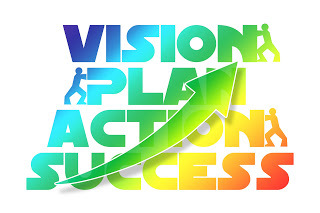Pearl Zhu's Blog, page 1271
December 5, 2016
The Spotlight on Digital CIOs - CIOs as Chief Innovation Officer Dec. 2016
Modern CIOs have many personas and face great challenges.
 Modern CIOs have many personas and face great challenges. It is not sufficient to only keep the light on. Regardless of which industry or the nature of organization you are in, being a digital leader will need to master the art of creating unique, differentiating value from piles of commoditized technologies, but more specifically, what are the digital-savvy CIOs doing to run IT as a growth engine and innovation Hub? Here is the monthly spotlight of the CIO. CIOs as Chief Innovation OfficerCIO as Chief Innovation Officer: Nowadays information is the lifeblood, and the emergent technology is more often the business disruptor. And due to the changing nature of information & technology, IT is always in the changing environment creating unexpected situations and requiring quick and appropriate responses based on the conditions. As businesses embark on the “digital Era” of computing (Cloud, Big Data, Mobile, Social). how will IT have to change? What is the nature of the new IT leadership and what is the primary role of the CIO in harnessing the IT leadership? Three Tips for CIO as Chief Innovation Officer? Modern CIOs have many personas indicated in the magic “I” of CIO title, Chief Innovation Officer is one of the most pertinent roles, because so much business innovation these days is enabled by technology, a good CIO with their finger on the pulse of technological advancement or information insight can provide many ideas on how new tech and abundance of info could create fresh business opportunities. CIOs are uniquely positioned to drive business innovation because of their vantage point in digital transformation. But how can CIO build a solid innovation agenda, and play such a new role more effectively? CIOs as “Chief Innovation Officer”: Taking a Systematic Approach to Run an Innovative IT? Doing more with innovation is the mantra for any forward-looking organizations. Though every executive should make their voice heard on this front, have an opportunity and responsibility to participate in the innovation dialog and to come up with innovative ideas, CIOs generally have greater opportunities to stand out, and take leadership in driving innovation across their companies. Because most of the functions can make process innovation within their division, IT, on the other hand, has much more of an opportunity to enable incremental top-line and bottom-line value across the business, not just within IT, but across the functional border because IT is in the unique position to oversee business processes underneath, also foresee the latest technological trend, capture information-based business insight to either delight customers or catalyze business growth. In practice, how to take a systematic approach to run an innovative IT?
Modern CIOs have many personas and face great challenges. It is not sufficient to only keep the light on. Regardless of which industry or the nature of organization you are in, being a digital leader will need to master the art of creating unique, differentiating value from piles of commoditized technologies, but more specifically, what are the digital-savvy CIOs doing to run IT as a growth engine and innovation Hub? Here is the monthly spotlight of the CIO. CIOs as Chief Innovation OfficerCIO as Chief Innovation Officer: Nowadays information is the lifeblood, and the emergent technology is more often the business disruptor. And due to the changing nature of information & technology, IT is always in the changing environment creating unexpected situations and requiring quick and appropriate responses based on the conditions. As businesses embark on the “digital Era” of computing (Cloud, Big Data, Mobile, Social). how will IT have to change? What is the nature of the new IT leadership and what is the primary role of the CIO in harnessing the IT leadership? Three Tips for CIO as Chief Innovation Officer? Modern CIOs have many personas indicated in the magic “I” of CIO title, Chief Innovation Officer is one of the most pertinent roles, because so much business innovation these days is enabled by technology, a good CIO with their finger on the pulse of technological advancement or information insight can provide many ideas on how new tech and abundance of info could create fresh business opportunities. CIOs are uniquely positioned to drive business innovation because of their vantage point in digital transformation. But how can CIO build a solid innovation agenda, and play such a new role more effectively? CIOs as “Chief Innovation Officer”: Taking a Systematic Approach to Run an Innovative IT? Doing more with innovation is the mantra for any forward-looking organizations. Though every executive should make their voice heard on this front, have an opportunity and responsibility to participate in the innovation dialog and to come up with innovative ideas, CIOs generally have greater opportunities to stand out, and take leadership in driving innovation across their companies. Because most of the functions can make process innovation within their division, IT, on the other hand, has much more of an opportunity to enable incremental top-line and bottom-line value across the business, not just within IT, but across the functional border because IT is in the unique position to oversee business processes underneath, also foresee the latest technological trend, capture information-based business insight to either delight customers or catalyze business growth. In practice, how to take a systematic approach to run an innovative IT?
The CIO’s Innovation Dilemma: IT plays a significant role in building the organization’s change capability to adapt to the digital new normal. Need for agility arises due to changes in underlying assumptions. Every CIO may ask self: Is IT responsive and proactive enough to find answers and solutions in case of emerging chances? Does IT have a platform which is scalable, secure, resilient and well interconnected? For achieving agility, IT leaders should both apply the digital management philosophy based on a set of Agile principles, but also leverage DevOp and take a series of practices to improving IT effectiveness and maturity.
 Running IT as an Innovation Engine in Digital Organizations Organizations large or small are at the digital journey, and corporate IT is also shifting from a support center to an innovation engine, because more often information is the lifeblood, and technology is the disruptor to push the business world into the digital paradigm. Hence, for any forward-thinking organizations, IT mantra is shifting from “doing more with less,” to “doing more with innovation. But more specifically, how to run IT as an innovation engine to accelerate digital shift?
Running IT as an Innovation Engine in Digital Organizations Organizations large or small are at the digital journey, and corporate IT is also shifting from a support center to an innovation engine, because more often information is the lifeblood, and technology is the disruptor to push the business world into the digital paradigm. Hence, for any forward-thinking organizations, IT mantra is shifting from “doing more with less,” to “doing more with innovation. But more specifically, how to run IT as an innovation engine to accelerate digital shift?
The “Future of CIO” Blog has reached 1.5 million page views with about #3300th blog posting in 59+ different categories of leadership, management, strategy, digitalization, change/talent, etc. The content richness is not for its own sake, but to convey the vision and share the wisdom. Blogging is not about writing, but about thinking and innovating the new ideas; it’s not just about WHAT to say, but about WHY to say, and HOW to say it. It reflects the color and shade of your thought patterns, and it indicates the peaks and curves of your thinking waves. Unlike pure entertainment, quality and professional content takes time for digesting, contemplation and engaging, and therefore, it takes time to attract the "hungry minds" and the "deep souls." It’s the journey to amplify diverse voices and deepen digital footprints, and it's the way to harness your innovative spirit.Follow us at: @Pearl_Zhu
 Modern CIOs have many personas and face great challenges. It is not sufficient to only keep the light on. Regardless of which industry or the nature of organization you are in, being a digital leader will need to master the art of creating unique, differentiating value from piles of commoditized technologies, but more specifically, what are the digital-savvy CIOs doing to run IT as a growth engine and innovation Hub? Here is the monthly spotlight of the CIO. CIOs as Chief Innovation OfficerCIO as Chief Innovation Officer: Nowadays information is the lifeblood, and the emergent technology is more often the business disruptor. And due to the changing nature of information & technology, IT is always in the changing environment creating unexpected situations and requiring quick and appropriate responses based on the conditions. As businesses embark on the “digital Era” of computing (Cloud, Big Data, Mobile, Social). how will IT have to change? What is the nature of the new IT leadership and what is the primary role of the CIO in harnessing the IT leadership? Three Tips for CIO as Chief Innovation Officer? Modern CIOs have many personas indicated in the magic “I” of CIO title, Chief Innovation Officer is one of the most pertinent roles, because so much business innovation these days is enabled by technology, a good CIO with their finger on the pulse of technological advancement or information insight can provide many ideas on how new tech and abundance of info could create fresh business opportunities. CIOs are uniquely positioned to drive business innovation because of their vantage point in digital transformation. But how can CIO build a solid innovation agenda, and play such a new role more effectively? CIOs as “Chief Innovation Officer”: Taking a Systematic Approach to Run an Innovative IT? Doing more with innovation is the mantra for any forward-looking organizations. Though every executive should make their voice heard on this front, have an opportunity and responsibility to participate in the innovation dialog and to come up with innovative ideas, CIOs generally have greater opportunities to stand out, and take leadership in driving innovation across their companies. Because most of the functions can make process innovation within their division, IT, on the other hand, has much more of an opportunity to enable incremental top-line and bottom-line value across the business, not just within IT, but across the functional border because IT is in the unique position to oversee business processes underneath, also foresee the latest technological trend, capture information-based business insight to either delight customers or catalyze business growth. In practice, how to take a systematic approach to run an innovative IT?
Modern CIOs have many personas and face great challenges. It is not sufficient to only keep the light on. Regardless of which industry or the nature of organization you are in, being a digital leader will need to master the art of creating unique, differentiating value from piles of commoditized technologies, but more specifically, what are the digital-savvy CIOs doing to run IT as a growth engine and innovation Hub? Here is the monthly spotlight of the CIO. CIOs as Chief Innovation OfficerCIO as Chief Innovation Officer: Nowadays information is the lifeblood, and the emergent technology is more often the business disruptor. And due to the changing nature of information & technology, IT is always in the changing environment creating unexpected situations and requiring quick and appropriate responses based on the conditions. As businesses embark on the “digital Era” of computing (Cloud, Big Data, Mobile, Social). how will IT have to change? What is the nature of the new IT leadership and what is the primary role of the CIO in harnessing the IT leadership? Three Tips for CIO as Chief Innovation Officer? Modern CIOs have many personas indicated in the magic “I” of CIO title, Chief Innovation Officer is one of the most pertinent roles, because so much business innovation these days is enabled by technology, a good CIO with their finger on the pulse of technological advancement or information insight can provide many ideas on how new tech and abundance of info could create fresh business opportunities. CIOs are uniquely positioned to drive business innovation because of their vantage point in digital transformation. But how can CIO build a solid innovation agenda, and play such a new role more effectively? CIOs as “Chief Innovation Officer”: Taking a Systematic Approach to Run an Innovative IT? Doing more with innovation is the mantra for any forward-looking organizations. Though every executive should make their voice heard on this front, have an opportunity and responsibility to participate in the innovation dialog and to come up with innovative ideas, CIOs generally have greater opportunities to stand out, and take leadership in driving innovation across their companies. Because most of the functions can make process innovation within their division, IT, on the other hand, has much more of an opportunity to enable incremental top-line and bottom-line value across the business, not just within IT, but across the functional border because IT is in the unique position to oversee business processes underneath, also foresee the latest technological trend, capture information-based business insight to either delight customers or catalyze business growth. In practice, how to take a systematic approach to run an innovative IT?The CIO’s Innovation Dilemma: IT plays a significant role in building the organization’s change capability to adapt to the digital new normal. Need for agility arises due to changes in underlying assumptions. Every CIO may ask self: Is IT responsive and proactive enough to find answers and solutions in case of emerging chances? Does IT have a platform which is scalable, secure, resilient and well interconnected? For achieving agility, IT leaders should both apply the digital management philosophy based on a set of Agile principles, but also leverage DevOp and take a series of practices to improving IT effectiveness and maturity.
 Running IT as an Innovation Engine in Digital Organizations Organizations large or small are at the digital journey, and corporate IT is also shifting from a support center to an innovation engine, because more often information is the lifeblood, and technology is the disruptor to push the business world into the digital paradigm. Hence, for any forward-thinking organizations, IT mantra is shifting from “doing more with less,” to “doing more with innovation. But more specifically, how to run IT as an innovation engine to accelerate digital shift?
Running IT as an Innovation Engine in Digital Organizations Organizations large or small are at the digital journey, and corporate IT is also shifting from a support center to an innovation engine, because more often information is the lifeblood, and technology is the disruptor to push the business world into the digital paradigm. Hence, for any forward-thinking organizations, IT mantra is shifting from “doing more with less,” to “doing more with innovation. But more specifically, how to run IT as an innovation engine to accelerate digital shift?The “Future of CIO” Blog has reached 1.5 million page views with about #3300th blog posting in 59+ different categories of leadership, management, strategy, digitalization, change/talent, etc. The content richness is not for its own sake, but to convey the vision and share the wisdom. Blogging is not about writing, but about thinking and innovating the new ideas; it’s not just about WHAT to say, but about WHY to say, and HOW to say it. It reflects the color and shade of your thought patterns, and it indicates the peaks and curves of your thinking waves. Unlike pure entertainment, quality and professional content takes time for digesting, contemplation and engaging, and therefore, it takes time to attract the "hungry minds" and the "deep souls." It’s the journey to amplify diverse voices and deepen digital footprints, and it's the way to harness your innovative spirit.Follow us at: @Pearl_Zhu
Published on December 05, 2016 23:01
Collective Insight in Decision Making
 Due to complex and change nature of the digital business ecosystem, more often than not, decision-making needs to take collaborative efforts and collective wisdom, brainstorm possible options and make alternative solutions. Decision-making today needs to take a systematic approach, but via nonlinear, collective thinking, the mix of analytics and intuition, and group contribution.
Due to complex and change nature of the digital business ecosystem, more often than not, decision-making needs to take collaborative efforts and collective wisdom, brainstorm possible options and make alternative solutions. Decision-making today needs to take a systematic approach, but via nonlinear, collective thinking, the mix of analytics and intuition, and group contribution.Consider and compare the advantages and disadvantages of all options: There is too often a tendency to take a one-size-fits-all approach to decision making, which includes a linear and static decision which commits to a singular path. A decision is arguably a choice between two or more options. The greater majority of these options are circumstantially provided. The general principle is to select the best option, avoid vagueness or indecisiveness. The issue, however, that the human brain cannot do, is to do a comparative assessment of many decision criteria, both quantitative and subjective, concurrently across many options, initiatives or programs etc. Thus, it is important to take advantage of advanced decision tools. When leveraging the tool weighing tradeoffs, it's important that the team has determined the relative importance of each factor. So it is even more important to build a team with decision-effectiveness. Teams, especially with the heterogeneous team setting, work because they bring different perspectives and knowledge to the table. They help to balance out the biases that from which the poor decisions are made.
Collective insight is superior: Given the complexity and uncertainty of the digital business world and given the fallacies of individual decision-making, more often than not, lack of knowledge and scarcity of insight lead to poor decision-making, Isn't it time businesses moved to groups, teams, circles making the decision and being accountable? One interpretation of information may differ greatly from another interpretation of that same information. One alternative may have a lot more strengths than another, but all those strengths together may not be nearly as important as the one or two strengths that another alternative has. It is always beneficial to communication, interpretation and accuracy of overall results when multiple heads come together to interpret and define information sources and outcomes. The more engaged the business leader in accessing information and understanding where it is extracted and how it is compiled, the better and more understood the results.
 The wisdom of crowds: It’s important to set principles, develop methods that engage the right people early in decision-making activity, in ways that collect sufficient information, "captured" innovative thinking and managed decisions and conflicts throughout the decision management cycle. Team decision works because they bring different perspectives and information to the table. They help balance out the biases that from which we all suffer. They help generate more of viable alternatives, resources, criteria, etc, all of which is shown to improve the quality of decisions. The more engaged the business decision-makers in accessing data and understanding where it is extracted and how it is compiled, the better and more understood the results.
The wisdom of crowds: It’s important to set principles, develop methods that engage the right people early in decision-making activity, in ways that collect sufficient information, "captured" innovative thinking and managed decisions and conflicts throughout the decision management cycle. Team decision works because they bring different perspectives and information to the table. They help balance out the biases that from which we all suffer. They help generate more of viable alternatives, resources, criteria, etc, all of which is shown to improve the quality of decisions. The more engaged the business decision-makers in accessing data and understanding where it is extracted and how it is compiled, the better and more understood the results.It is important to understand digital organizations as socio-technical systems, people readily perceive organizations and projects requiring the confluence of multiple perspectives (people, process, and technology) to make great decisions. Effective decision making, especially strategic decision-making, needs to search for business insight, well blend both information and intuition; think fast and slow accordingly, and always prepare for some alternative solutions to invite diverse opinions and welcome collective wisdom.Follow us at: @Pearl_Zhu
Published on December 05, 2016 22:58
Running an Always-on, Real-Time Digital IT Organization
 Digital means hyper- connectivity and interdependence. Digital transformation represents a break from the past, with a high level of impact and complexity. IT organizations have come a long way from being pure technical specialists to being strategic partners critical to achieving business growth and transformation. But how to run an always-on real-time digital IT organization?
Digital means hyper- connectivity and interdependence. Digital transformation represents a break from the past, with a high level of impact and complexity. IT organizations have come a long way from being pure technical specialists to being strategic partners critical to achieving business growth and transformation. But how to run an always-on real-time digital IT organization?Hyper-connectivity: The real-time digital enterprise gets “wired” without wire, the modern digital technologies provide both organizations and employees alternative to access working related information with their fingertip remotely. Therefore, IT plays a critical role in breaking down silos, and CIOs can provide the visible corporate leadership and support that is required as traditional hierarchies are challenged and dismantled. IT can empower business users with efficient digital platforms and tools to harness cross-functional communication and enforce business collaboration. Few organizations have found a way to reward the type of thinking that allows people to connect the dots and stimulate creativity and innovative problem-solving. Either at the individual or enterprise level, connecting the dots, both across and within organizational boundaries has always been a problem. Success is far more likely if CIOs and IT professionals are seen as integral team players whose efforts add multidimensional value to the deployment of collaborative team structures within the organization.
Nonstop and instant-on with digital speed: IT consumerization is the catalyst to fuel today’s fast speed, to boost employees’ productivity, to reduce the cost and to provide unique customer values. The modern enterprise needs to be non-stop, instant-on, and to leapfrog digital transformations In the digital dynamic where innovation threatens to tear down legacy systems and practices just as it generates new opportunities, it's natural to fear the unknown, question the unproven, be skeptical of the latest technology trends. The CIO needs to have an optimistic attitude, and even thing's not going so well, as positive attitude will fuel the passion, and be proactive for problem-solving. Digital IT is nonstop, keep changing, not for its own sake, but to make continuous improvement and become high-innovative. CIOs should transform self from IT managers only to also be perceived as an influential business leader, be an IT practitioner and business strategist at the same time speed up and run an instant-on digital organization.
 Responsiveness: Running a real-time digital IT organization means high-responsiveness. Unfortunately the majority of IT organizations today are perceived by their business partners as the change laggard and get stuck at the lower level of maturity. Digitalization implies the full-scale changes in the way business is conducted so that simply adopting a new digital technology is not insufficient. You have to transform the company's underlying functions and organization as a whole with adjusted digital speed. The purpose of businesses today is to amplify collective human capability and business capacity in order to compete confidently, it's also about the right timing in decision-making and problem-solving as the latest technology trend such as social/mobile/analytics/cloud continue blurring business boundary, expand business influence and expose enterprise into high risk surrounding. Keep in mind, always do right things before doing things right. Because, if you have a process that is "wrong," the application of technology will simply make getting "wrong" quicker. A high-responsive IT should lead the way to lifting one foot and shifting the organizational structure more into participative models that better support the quantum leap in speed we are experiencing.
Responsiveness: Running a real-time digital IT organization means high-responsiveness. Unfortunately the majority of IT organizations today are perceived by their business partners as the change laggard and get stuck at the lower level of maturity. Digitalization implies the full-scale changes in the way business is conducted so that simply adopting a new digital technology is not insufficient. You have to transform the company's underlying functions and organization as a whole with adjusted digital speed. The purpose of businesses today is to amplify collective human capability and business capacity in order to compete confidently, it's also about the right timing in decision-making and problem-solving as the latest technology trend such as social/mobile/analytics/cloud continue blurring business boundary, expand business influence and expose enterprise into high risk surrounding. Keep in mind, always do right things before doing things right. Because, if you have a process that is "wrong," the application of technology will simply make getting "wrong" quicker. A high-responsive IT should lead the way to lifting one foot and shifting the organizational structure more into participative models that better support the quantum leap in speed we are experiencing. The goal to run a real-time digital IT organization is to create synergy and achieve digital synchronization of the entire organization. Collaboration is good, but it’s not an end in itself. Creating a context where people can collaborate where they are empowered and respected and make collective decisions is the essence of the information management.
Follow us at: @Pearl_Zhu
Published on December 05, 2016 22:54
December 4, 2016
The New Book “Unpuzzling Innovation” Quote Collection III
 Digital is the age of innovation. And innovation is what leads to differentiation. There are many ways to differentiate and, therefore, there are many ways to pursue innovation. The purpose of “Unpuzzling Innovation - Mastering Innovation Management in a Structural Way“ is to demystify innovation puzzle in a structural way. Innovation is the process which can be classified scientifically and managed dynamically. Innovation is neither serendipity nor status quo, it needs to break some outdated rules, builds digital principles, and takes a systematic approach with robust, but not overly rigid processes to implement it. Digital innovators are the “whole-brainers” who present leadership skills and multidimensional intelligence, to mastering the “art of possible.” Creativity is simply about connecting the dots, the difference between innovation and creativity is implementation. It’s important to develop a set of best/next practices to manage digital innovation continuum effectively. It’s also critical to understand the paradox of innovation and strike the right balance between ideation and execution part of the innovation process and management. Innovation journey is thorny, be cautious about gaps and pitfalls on the way, to improve innovation success rate and measure it in the right way.
Digital is the age of innovation. And innovation is what leads to differentiation. There are many ways to differentiate and, therefore, there are many ways to pursue innovation. The purpose of “Unpuzzling Innovation - Mastering Innovation Management in a Structural Way“ is to demystify innovation puzzle in a structural way. Innovation is the process which can be classified scientifically and managed dynamically. Innovation is neither serendipity nor status quo, it needs to break some outdated rules, builds digital principles, and takes a systematic approach with robust, but not overly rigid processes to implement it. Digital innovators are the “whole-brainers” who present leadership skills and multidimensional intelligence, to mastering the “art of possible.” Creativity is simply about connecting the dots, the difference between innovation and creativity is implementation. It’s important to develop a set of best/next practices to manage digital innovation continuum effectively. It’s also critical to understand the paradox of innovation and strike the right balance between ideation and execution part of the innovation process and management. Innovation journey is thorny, be cautious about gaps and pitfalls on the way, to improve innovation success rate and measure it in the right way.55 The purpose of Innovation Management is not to promote innovation, but to manage innovation as a process,56 Innovativeness is absolutely a mindset.57 The business innovation success is not always proportional with how much money you pour in.58 Breaking rules is indeed an important part of creativity. 59 Prioritization needs to provide a framework for focusing on creativity.60 Creativity is an outcome of a deep understanding of the patterns of thinking that underlies Systems Thinking.61 Someone obviously needs to innovate otherwise the world will come to a standstill.62 Agile stifles innovation when stakeholders dictate “how,” and not get “why,” and “what.”63 Innovation per se is like composing a symphony, lots of planning, but the music will come from the musicians, not the director.64 Innovation fails because everyone is talking about it instead of doing it collaboratively.65 Innovation is the sustainable and scalable way that can be learned and practiced.66 The success of innovation management is never an accident; it is a thought-out planning and seamless execution.67 Bridging innovation gaps is a strategic imperative for business execution. 68 It is worth the effort to break down silos, get out of comfort zone, and prepare the future proactively, in order for individuals and businesses to reach digital premium and maturity.69 The search for the key to the “sustainable innovation holy grail” requires a specific understanding of innovators’ motivation. 70 A good innovation shouldn’t be just the serendipity; and a bad innovation needs to become a learning lessons. 71 Creativity is the innate ability to envisioning, problem-solving and path discovery. 72 The innovative attitude should be fearless to change the experiment, but be paranoid to avoid unnecessary mistakes or take a calculated risk.73 The measures should be oriented to justify innovations the organization needs.74 It takes innovation to measure innovation performance.75 See through innovators from the heart and mind.76 KPIs are critical to the test-and-learn process.77 KPIs are the best tools available for innovation managers that wish to promote continuous innovation within any organizations.78 Take calculated risks, and reward innovators.79 The goal of innovation measurement is to not only do thing right but do the right things and continuously improve doing that.
 80 Make the innovation process as visible, company-wide, as possible, but not too rigid.81 Innovation management assessment and measurement is both art and science. 82 Innovation must be part of the organization’s DNA -culture.
80 Make the innovation process as visible, company-wide, as possible, but not too rigid.81 Innovation management assessment and measurement is both art and science. 82 Innovation must be part of the organization’s DNA -culture.83 Innovation = Idea executed to produce value.Follow us at: @Pearl_Zhu
Published on December 04, 2016 23:26
The Art and Science of Decision-Making
 Both business and world become over-complex, hyper-connected, extremely uncertain and ambiguous than ever, making effective decisions is both art and science. There are blind spots block the vision and there are pitfalls on the way. What are philosophy and practices to improve decision making effectiveness and the overall business responsiveness?
Both business and world become over-complex, hyper-connected, extremely uncertain and ambiguous than ever, making effective decisions is both art and science. There are blind spots block the vision and there are pitfalls on the way. What are philosophy and practices to improve decision making effectiveness and the overall business responsiveness?The art of decision making includes the art of questioning: Part of the problem in decision ineffectiveness has to do with how you frame the question. Inappropriate framing is being the root cause of most bad decisions. It’s also due to the lack of inquisitive minds. People need to leverage both critical thinking and creative thinking to ask tough questions for framing the real issues behind decision making. The thinking approach being used is informed at some level on subjective, intuitive sources of information, but it was calibrated and employed in the structured guiding process that got everyone to slow down and think through the implications of their intuitive, subjective assumptions. The decision on a sound basis, mixing feelings and reflection, inner wisdom and self-regulation. make sure decisions are being taken neither impulsively nor too late, in order to avoid uncertainty, one of the biggest pitfalls to any business transformation.
The science of decision making is to make sure there is an effective decision process in place: And for the same reason, you need a sound process to frame the decision, spec out your options, weigh them appropriately with the right people, to make sure decisions are being executed and not permanently questioned. The importance of the process becomes critical as decisions become more complex and involve more diverse stakeholders. The entire decision-making process includes understanding the need, engaging key stakeholders, ensuring effective communication, assessing alternatives, developing consensus, planning, communicating, executing, and following up on the decision making. Identify potential benefits and required changes to achieve the objectives, to find the "cause and effect" chain of intermediate milestones required to achieve end benefits and transformation objectives. This step also ensures benefits are owned by relevant stakeholders. Decision-making is a process, not an event.
 Both the art of intuition and the science of analytics have the role to play in making wise decisions: There are many considerations in leveraging thinking fast and slow. Sometimes there is no time for analysis. Sometimes the issue is small, and detailed analysis is not worth the effort. Sometimes key data is not available. Sometimes the intuition does well before you are able to explain the logic; and the other times, you just have to break down the big problems to solve them piece by piece via carefully reasoning. The decision-making scenario include: Identification of tasks, understanding the tasks and how they should be sequenced, and how to leverage data associated with tasks optimally to make effective decisions.
Both the art of intuition and the science of analytics have the role to play in making wise decisions: There are many considerations in leveraging thinking fast and slow. Sometimes there is no time for analysis. Sometimes the issue is small, and detailed analysis is not worth the effort. Sometimes key data is not available. Sometimes the intuition does well before you are able to explain the logic; and the other times, you just have to break down the big problems to solve them piece by piece via carefully reasoning. The decision-making scenario include: Identification of tasks, understanding the tasks and how they should be sequenced, and how to leverage data associated with tasks optimally to make effective decisions.Decision making is an art only until the person understands the science (process, analytics. etc). It takes the multidisciplinary approach, frame the right questions before answer them. It has a combination of both creative thinking and critical thinking, divergent and convergent thinking processes behind it. Ensure you are both information savvy and be flexible to select the optimal solutions.Follow us at: @Pearl_Zhu
Published on December 04, 2016 23:23
Is your IT Organization a Digital Forerunner
 Due to the exponential growth of information and disruptive nature of digital technologies, forward-looking organizations across the industrial sectors have high expectation of their IT organizations. It is not sufficient to run a reactive IT to keep the lights on, or a support function to take orders only. Can your IT organization ride above the learning curve, to become the harbinger of change and a digital forerunner?
Due to the exponential growth of information and disruptive nature of digital technologies, forward-looking organizations across the industrial sectors have high expectation of their IT organizations. It is not sufficient to run a reactive IT to keep the lights on, or a support function to take orders only. Can your IT organization ride above the learning curve, to become the harbinger of change and a digital forerunner?Visionary IT leadership: The IT leader of the future and the exemplars of today must move away from pure IT manager, and be a true business partner and strategist. CIOs needs to be technology visionary, to stay one-step ahead of the enterprise leadership team's view of IT-related priorities. Especially as more and more enterprises are leveraging IT for revenue generating initiatives; what some refer to as IT "is the business." IT will not "be the business" if it does not focus on the top prioritized business initiatives. With the growth in enterprises leveraging IT for revenue generating initiatives. The objective is to recognize what needs to be done, to assess how well things are being done, to assign and reassign priorities to what needs to be done, and to invest in improvements in mindful ways. The critical, continuing concerns for the collective IT leadership team are to ensure that the talent exists (internally or externally sourced) to get things done and to fill talent gaps; to maintain an on-going awareness of what technology issues are of most importance to the enterprise leadership team and to communicate and fill gaps between business and IT, between IT and customers, and to be an driver than just an enabler only.
The digital IT can weave all crucial business elements both hard and soft to synchronize digital transformation: Business has three fundamental pillars: People, process and technology. Basically, there is a main corporate goal. From this goal, you determine certain "action items." These action items become goals for business units. The business units determine action items from these goals and these action items become the goals of the departments within each business unit. The role of digital IT is to identify and blend the ways that information and technology can assist and shape the business by linking all digital aspects together to enforce the business competency; these are then mixed with other ingredients to create products and process which generate differentiated business capabilities for strategy management and their business’s long-term growth, Strategy-execution synchronization woven via IT can lead the smooth alignment process of ensuring all organization action is directed to achieving common strategic goals and objectives. This means to translate strategy to operational terms aligning the organization to create synergies in making strategy everyone’s everyday job and a continual process mobilizing change through digital synchronization.
 A forerunner digital IT can give your business the ability to apply real-time insights across the organization in ways never possible before: With these insights, organizations acquire the ability to reshape products, services, and customer engagement, with the help of digital technologies, You can realign your operating model so that customer preferences and requirements are reflected throughout the organization, which will be business beneficial in terms to speed up to enable you to listen, engage and nurture relationships with consumers and build an integrated view of business insight derived from data extracted from different sources. Digital synchronization can also catalyze the flow of the right information to the right people at the right time to coordinate and execute strategy, tactics and risks and enhance intuitive, engaging and context specific user experience. Being customer-centric is not just about a few best practices or even a pretty high-level customer interface, it has to go deeper to combine all key business ingredients in orchestrating a digital business which has key capabilities to delight customers.
A forerunner digital IT can give your business the ability to apply real-time insights across the organization in ways never possible before: With these insights, organizations acquire the ability to reshape products, services, and customer engagement, with the help of digital technologies, You can realign your operating model so that customer preferences and requirements are reflected throughout the organization, which will be business beneficial in terms to speed up to enable you to listen, engage and nurture relationships with consumers and build an integrated view of business insight derived from data extracted from different sources. Digital synchronization can also catalyze the flow of the right information to the right people at the right time to coordinate and execute strategy, tactics and risks and enhance intuitive, engaging and context specific user experience. Being customer-centric is not just about a few best practices or even a pretty high-level customer interface, it has to go deeper to combine all key business ingredients in orchestrating a digital business which has key capabilities to delight customers.IT is an enabler and catalyzer to unleash the business’s digital potential and leap the business to reach the era of radical digital. Running IT as a digital forerunner doesn’t mean IT always lead above or act ahead, it means IT should always think ahead, to build the 'right' bridge between IT and business, close the gap of doing the basics right to synchronize business and IT and orchestrate the digital symphony.
Follow us at: @Pearl_Zhu
Published on December 04, 2016 23:20
December 3, 2016
The New Book “Unpuzzling Innovation” Quote Collection II
 Digital is the age of innovation. And innovation is what leads to differentiation. There are many ways to differentiate and, therefore, there are many ways to pursue innovation. The purpose of “Unpuzzling Innovation - Mastering Innovation Management in a Structural Way“ is to demystify innovation puzzle in a structural way. Innovation is the process which can be classified scientifically and managed dynamically. Innovation is neither serendipity nor status quo, it needs to break some outdated rules, builds digital principles, and takes a systematic approach with robust, but not overly rigid processes to implement it. Digital innovators are the “whole-brainers” who present leadership skills and multidimensional intelligence, to mastering the “art of possible.” Creativity is simply about connecting the dots, the difference between innovation and creativity is implementation. It’s important to develop a set of best/next practices to manage digital innovation continuum effectively. It’s also critical to understand the paradox of innovation and strike the right balance between ideation and execution part of the innovation process and management. Innovation journey is thorny, be cautious about gaps and pitfalls on the way, to improve innovation success rate and measure it in the right way.
Digital is the age of innovation. And innovation is what leads to differentiation. There are many ways to differentiate and, therefore, there are many ways to pursue innovation. The purpose of “Unpuzzling Innovation - Mastering Innovation Management in a Structural Way“ is to demystify innovation puzzle in a structural way. Innovation is the process which can be classified scientifically and managed dynamically. Innovation is neither serendipity nor status quo, it needs to break some outdated rules, builds digital principles, and takes a systematic approach with robust, but not overly rigid processes to implement it. Digital innovators are the “whole-brainers” who present leadership skills and multidimensional intelligence, to mastering the “art of possible.” Creativity is simply about connecting the dots, the difference between innovation and creativity is implementation. It’s important to develop a set of best/next practices to manage digital innovation continuum effectively. It’s also critical to understand the paradox of innovation and strike the right balance between ideation and execution part of the innovation process and management. Innovation journey is thorny, be cautious about gaps and pitfalls on the way, to improve innovation success rate and measure it in the right way.
 35 Innovation takes the cycle of observing-questioning-connecting-networking-experimenting.36 Creativity is the ability to create novel value, and innovation is how to transform ideas and achieve their business value. 37 Creativity is infused with an inner cohesion and comes from a vision of uniqueness.38 Innovation is optimal change, and it cannot be successful without grounding change management.39 Both innovation and continuous improvement are the way to adapt to changes; either stepwise or breakthrough.40 The foundation for innovation has to be grounded in the “vision” which is linked to “hope” and seeking justice or truth.41 There is an emotional life cycle in an innovativeness process. 42 Invention precedes innovation. But innovation does not always need invention. 43 Raise your consciousness of the balance, and that, in and of itself, makes a world of difference.44 Creativity and consciousness are interlinked, like the two strands of the same DNA. 45 Creativity is fueled via a combination of intrinsic and extrinsic factors.46 Creativity is not a “thing,” it’s a process that happens as a proactive mental activity to a problem.47 Intuition is more about “gut feeling,” and creativity is about “thinking out of the box.”48 Innovation is the book never ends. 49 Innovation is a discipline that, if understood fully, read more like a blueprint than science fiction. 50 Innovation is about moving forward. In any business, if you are not moving forward, you are moving backward.51 Creativity is a “domain” contextualized competency.52 Modern BoDs are innovators who can break down the old rules, and set digital principles to inspire businesses stepping into the new chapter of digital innovation.53 The change shall not always be stressful and reactive, make it as fun and proactive as possible.
35 Innovation takes the cycle of observing-questioning-connecting-networking-experimenting.36 Creativity is the ability to create novel value, and innovation is how to transform ideas and achieve their business value. 37 Creativity is infused with an inner cohesion and comes from a vision of uniqueness.38 Innovation is optimal change, and it cannot be successful without grounding change management.39 Both innovation and continuous improvement are the way to adapt to changes; either stepwise or breakthrough.40 The foundation for innovation has to be grounded in the “vision” which is linked to “hope” and seeking justice or truth.41 There is an emotional life cycle in an innovativeness process. 42 Invention precedes innovation. But innovation does not always need invention. 43 Raise your consciousness of the balance, and that, in and of itself, makes a world of difference.44 Creativity and consciousness are interlinked, like the two strands of the same DNA. 45 Creativity is fueled via a combination of intrinsic and extrinsic factors.46 Creativity is not a “thing,” it’s a process that happens as a proactive mental activity to a problem.47 Intuition is more about “gut feeling,” and creativity is about “thinking out of the box.”48 Innovation is the book never ends. 49 Innovation is a discipline that, if understood fully, read more like a blueprint than science fiction. 50 Innovation is about moving forward. In any business, if you are not moving forward, you are moving backward.51 Creativity is a “domain” contextualized competency.52 Modern BoDs are innovators who can break down the old rules, and set digital principles to inspire businesses stepping into the new chapter of digital innovation.53 The change shall not always be stressful and reactive, make it as fun and proactive as possible.Follow us at: @Pearl_Zhu
Published on December 03, 2016 23:09
Three “IN”gredients of Digital Boards
 Due to the complexity, uncertainty, ambiguity and volatility of digital age, digitizing the boardroom is inevitable. The directorship in any organization must have the ability to guide, inspire and motivate a group of people toward accomplishing shared visions and goal, set the leadership tone to influence business “mindset” and lead changes as well as digital transformation. Here are three digital ingredients to improve boards’ effectiveness and maturity.
Due to the complexity, uncertainty, ambiguity and volatility of digital age, digitizing the boardroom is inevitable. The directorship in any organization must have the ability to guide, inspire and motivate a group of people toward accomplishing shared visions and goal, set the leadership tone to influence business “mindset” and lead changes as well as digital transformation. Here are three digital ingredients to improve boards’ effectiveness and maturity. Insight: Digital BoDs need to be the “mastermind” behind the digital transformation. The BoD needs to gain deeply understanding about the enterprise in order to be a credible actor in the strategy dialogue. BoDs are insightful leaders who are fluent on multidimensional thought processes. One of the most crucial roles of boards is to practice independent thinking in a collective way and provide valuable feedback and deep insight, not the rubber stamp, to the management team of the organization and help them leap the organizational management effectiveness up to the next level. A board should be engaged in by scrutinizing the strategy, with regard to the strategic thinking, keep asking what’s happening in your industry and what’re your competitors doing, what could make your vision cloudy and how to clarify it etc. The BoDs are also critical thinkers who can make constructive criticism about business strategies, identify blind spots and pinpoint potential pitfalls. Digital BoDs also need to master Systems Thinking which is about understanding the interconnectivity of the parts and the whole, to deal with today’s overly complex and uncertain digital dynamic. So the board oversight is captured from a much broader and encompassing view that is not possible in linear thinking.
Inquisitiveness: The board's role is to pull management out of the trees to see the forest. To understand the shape of the business landscape and how it will address this. Therefore, they need to be inquisitive and adventurous. Even the majority of BoDs are senior executives, they need to break down the “status quo,” present learning agility and show the inquisitiveness to ask the tough and right questions about strategy, information, talent or risk management, to continue questioning on important issues where management's answers do not make sense. To ensure there is a strong context for establishing the tactical choices and the surprises that will invariably show up. The board represents the ownership and they really cannot do a good job if they don't have the courage and knowledge to question and challenge and set the broad strategic goals, culture tone, and the digital theme of boardroom itself.
 Innovation: Digital is the age of innovation, and innovation is what leads to differentiation. Innovation should be embedded in every aspect of the organization, the great ideas can come from front line workers, but innovation leadership comes from the top, and innovation management should be demystified in a structural way to improve the success rate. Hence, boards play a significant role in influencing and setting guidelines and policies for building the culture of innovation. The Boards of Directors need to practice creative thinking, participate, or even lead in the area of innovation from outliers’ viewpoint, to see things differently and help connect the unusual dots for both innovation management and management innovation. It means to accelerate innovation at the multitude of levels, to create the space for dialogue and debate about why it is important for their organization, developing a common understanding of it, creating the necessity and motivation for it.
Innovation: Digital is the age of innovation, and innovation is what leads to differentiation. Innovation should be embedded in every aspect of the organization, the great ideas can come from front line workers, but innovation leadership comes from the top, and innovation management should be demystified in a structural way to improve the success rate. Hence, boards play a significant role in influencing and setting guidelines and policies for building the culture of innovation. The Boards of Directors need to practice creative thinking, participate, or even lead in the area of innovation from outliers’ viewpoint, to see things differently and help connect the unusual dots for both innovation management and management innovation. It means to accelerate innovation at the multitude of levels, to create the space for dialogue and debate about why it is important for their organization, developing a common understanding of it, creating the necessity and motivation for it. There are many ingredients in building a high-performance digital board. As the top leadership team, the board just has to step into the digital vision, exemplify digital leadership effectiveness, to both have an overview and do a credible drill down, and walk the talk in driving the business transformation.
Follow us at: @Pearl_Zhu
Published on December 03, 2016 23:07
Three Principles to Highlight Digital IT leadership
 Due to the “VUCA” characteristics of digital new normal, IT is in the middle of a sea change, Modern technology proves human’s progress. At a contemporary business, technology is an enabler for business transformation, process optimization and talent empowerment. It is important to realize that there are basic principles and rules that make it work. CIOs must set guidelines to run digital organizations. Here are three principles to highlight digital IT leadership. Lead, don't just manage: Management is about execution while leadership is about change, specifically influencing others to change. CIOs are not just tactical IT managers, but transformational business leaders. CIO as a C-level peer executive, the leadership footprint needs to cover all functional organizations and their inter-relationships and know how to orchestrate them effectively. Leading through influence is critical. CIOs need to practice thought leadership and mak an influence on their industry and professions. Keep Industry connections warm, Leverage tools to capture the Technology/Market Trends, and envision the future of IT. More often than not, technology is the driver of business change or digital transformation. Therefore, CIOs as IT leaders, will play more proactive role in driving changes or leading transformation. Make sure that nothing is dismissed due to out of date beliefs or the natural human emotions. Run IT not as an isolated support function, but as a changing organization to catalyze growth and fuel innovation. It is easy to get caught up in the race toward being at the cutting-edge, but foresight and careful thought are required to truly understand the implications of new technology. The CIO needs to be the visionary derives the most value out of the technology investments by translating the promise of technology to strategic and competitive advantage for the company.
Due to the “VUCA” characteristics of digital new normal, IT is in the middle of a sea change, Modern technology proves human’s progress. At a contemporary business, technology is an enabler for business transformation, process optimization and talent empowerment. It is important to realize that there are basic principles and rules that make it work. CIOs must set guidelines to run digital organizations. Here are three principles to highlight digital IT leadership. Lead, don't just manage: Management is about execution while leadership is about change, specifically influencing others to change. CIOs are not just tactical IT managers, but transformational business leaders. CIO as a C-level peer executive, the leadership footprint needs to cover all functional organizations and their inter-relationships and know how to orchestrate them effectively. Leading through influence is critical. CIOs need to practice thought leadership and mak an influence on their industry and professions. Keep Industry connections warm, Leverage tools to capture the Technology/Market Trends, and envision the future of IT. More often than not, technology is the driver of business change or digital transformation. Therefore, CIOs as IT leaders, will play more proactive role in driving changes or leading transformation. Make sure that nothing is dismissed due to out of date beliefs or the natural human emotions. Run IT not as an isolated support function, but as a changing organization to catalyze growth and fuel innovation. It is easy to get caught up in the race toward being at the cutting-edge, but foresight and careful thought are required to truly understand the implications of new technology. The CIO needs to be the visionary derives the most value out of the technology investments by translating the promise of technology to strategic and competitive advantage for the company.Strive to be digital fit and more business-focused: The CIO’s ability to create fundamental business value is now greater than ever. The CIO is required to think about business first, technology second. Technology is one of the tools the CIO uses to help move the business in the direction of meeting its strategic objectives. CIOs need to be a knowledgeable business strategist and specialized business generalist to co-create strategy, the focal point of digitalization strategy is part and parcel of an overall corporate strategy and then an IT strategy. Co-development of strategy by business and IT would reduce risks of surprise disruptions and better involve IT in bolstering competitive advantage. This strategic focus is all the more important in the current environment where technological advances happen at a rapid face. Understand your organization’s strategic goals and initiatives. What are you doing that doesn't specifically support strategy? Work toward getting all of those tasks off of your plate. What can you delegate to your team? Delegate and let them do their jobs. Also, make sure that the external customers who purchase products or services have a great experience relating to any IT systems that impact them. Make it clear that the direction and accomplishments of IT are directly affected by the entire company's involvement. Make IT integrated in the company while avoiding making it a separate "stand alone" department.
 First people, then process, and then technology in that order: The CIOs have to master at conducting such a hybrid digital orchestra with all important business elements, but with the right order: people, process, and technology. They wouldn't be able to create a 'symphony' without the full participation of his/her team members. It is important to dedicate open door time for people to come and discuss any challenges, or share any innovative ideas and creative problem solving. However, there are still too many organizations just have very silo HR systems, processes and practices, still treat talent as human resources with old-fashioned way to recruit, retain, training and rewards, and have not focused on building collective talent capabilities sufficiently. CIOs should act as talent masters, to promote and take advantage of the latest technologies such as social platforms and tools by recognizing its huge potential, to revitalize the talent solution by shaking up the current talent pool, exploring the multiple digital talent solutions with open mindsets, and decentralizing the workforce with self-management capability.
First people, then process, and then technology in that order: The CIOs have to master at conducting such a hybrid digital orchestra with all important business elements, but with the right order: people, process, and technology. They wouldn't be able to create a 'symphony' without the full participation of his/her team members. It is important to dedicate open door time for people to come and discuss any challenges, or share any innovative ideas and creative problem solving. However, there are still too many organizations just have very silo HR systems, processes and practices, still treat talent as human resources with old-fashioned way to recruit, retain, training and rewards, and have not focused on building collective talent capabilities sufficiently. CIOs should act as talent masters, to promote and take advantage of the latest technologies such as social platforms and tools by recognizing its huge potential, to revitalize the talent solution by shaking up the current talent pool, exploring the multiple digital talent solutions with open mindsets, and decentralizing the workforce with self-management capability.CIOs must set the principles, guideline and rules to run a digital IT. CIO might need to play the paradoxical roles, the strategic initiator, the idea instigator, but also the disciplined engineering manager and governance champion. Especially now, businesses large or small are facing of radical digital disruption, “Do More with Innovation” is the mantra for running IT through taking advantage of new IT trend, as timely enablers to deliver the business solution with elasticity and agility.
Follow us at: @Pearl_Zhu
Published on December 03, 2016 23:02
December 2, 2016
The Spotlight on Digital CIOs -CIOs as Chief Improvement Officer Dec. 2016
Modern CIOs have many personas and face great challenges.
 Modern CIOs have many personas and face great challenges. It is not sufficient to only keep the light on. Regardless of which industry or the nature of organization you are in, being a digital leader will need to master the art of creating unique, differentiating value from piles of commoditized technologies, but more specifically, what are the digital-savvy CIOs doing to run IT as a growth engine and innovation Hub? Here is the monthly spotlight of the CIO. CIOs as Chief Improvement Officer
Modern CIOs have many personas and face great challenges. It is not sufficient to only keep the light on. Regardless of which industry or the nature of organization you are in, being a digital leader will need to master the art of creating unique, differentiating value from piles of commoditized technologies, but more specifically, what are the digital-savvy CIOs doing to run IT as a growth engine and innovation Hub? Here is the monthly spotlight of the CIO. CIOs as Chief Improvement Officer
CIO as Chief Improvement Officer: The “I” in CIO title is full of imagination; Chief Improvement Officer is a right fit for modern CIO role. CIOs need to have unique business insight, technological vision to understand the business not only from the inside-out viewpoint but through outside-in customer’s lens. With that knowledge, CIOs can drive innovation to improve the hard business process and soft organizational culture by implementing technical solution, and improve IT and overall business agility and maturity. CIO as Chief Improvement Officer -How to Run a “Future-Proof” IT ? Technology becomes pervasive in modern enterprises today, on one hand, CIOs play one of the most significant business leadership roles, to manage one of the most valuable business assets -information in digital organizations; on the other side, the rapidly changing business climate also makes CIOs feel like to live in the tropical jungle, facing many attacks, in the danger of getting dismissed as techies without business savvy by their executive peers.With emergent IT consumerization trends, businesses sometimes bypass the internal IT to purchase on-demand services with potential risk compromising. At the dawn of Digital Era with an abundance of information and lightweight technologies, how can CIOs act as Chief Improvement Officers in the organization, continue improving services and solutions, craft a set of unique capabilities and run a “future-proof” IT organization for achieving operational excellence and high-level agility and maturity? CIO as Chief Improvement Officer III: How do you know when it's time for an Organizational Re-Design? Dysfunction, infighting, overlapping roles, and inefficiencies are not always easy to uncover. It takes processes, methodology, and practices to identify the causes of IT ineffectiveness and inefficiency, CIOs as Chief Improvement Officer: How do you know when it’s time for an organizational re-design?
CIO as Chief Improvement Officer III: How do you know when it's time for an Organizational Re-Design? Dysfunction, infighting, overlapping roles, and inefficiencies are not always easy to uncover. It takes processes, methodology, and practices to identify the causes of IT ineffectiveness and inefficiency, CIOs as Chief Improvement Officer: How do you know when it’s time for an organizational re-design?
How to Leverage DevOp to Improving IT Agility”: IT plays a significant role in building the organization’s change capability to adapt to the digital new normal. Need for agility arises due to changes in underlying assumptions. Every CIO may ask self: Is IT responsive and proactive enough to find answers and solutions in case of emerging chances? Does IT have a platform which is scalable, secure, resilient and well interconnected? For achieving agility, IT leaders should both apply the digital management philosophy based on a set of Agile principles, but also leverage DevOp and take a series of practices to improving IT effectiveness and maturity.
CIO as Chief Improvement Officer II: How to Improve Application Development? Given the dynamic nature of the business today, any CIO has to play the role of key change agent and Chief Improvement Officer. Do they see application development as an innovator for driving business change? Or would they prefer to just "abstract the problem away" by outsourcing it? Since technology (and hence application development) is the key driver and support function for any change, CIOs do need to ensure that the application development being carried out is well aligned with the business needs and the change that is taking place accordingly?
The “Future of CIO” Blog has reached 1.5 million page views with about #3300th blog posting in 59+ different categories of leadership, management, strategy, digitalization, change/talent, etc. The content richness is not for its own sake, but to convey the vision and share the wisdom. Blogging is not about writing, but about thinking and innovating the new ideas; it’s not just about WHAT to say, but about WHY to say, and HOW to say it. It reflects the color and shade of your thought patterns, and it indicates the peaks and curves of your thinking waves. Unlike pure entertainment, quality and professional content takes time for digesting, contemplation and engaging, and therefore, it takes time to attract the "hungry minds" and the "deep souls." It’s the journey to amplify diverse voices and deepen digital footprints, and it's the way to harness your innovative spirit.Follow us at: @Pearl_Zhu
 Modern CIOs have many personas and face great challenges. It is not sufficient to only keep the light on. Regardless of which industry or the nature of organization you are in, being a digital leader will need to master the art of creating unique, differentiating value from piles of commoditized technologies, but more specifically, what are the digital-savvy CIOs doing to run IT as a growth engine and innovation Hub? Here is the monthly spotlight of the CIO. CIOs as Chief Improvement Officer
Modern CIOs have many personas and face great challenges. It is not sufficient to only keep the light on. Regardless of which industry or the nature of organization you are in, being a digital leader will need to master the art of creating unique, differentiating value from piles of commoditized technologies, but more specifically, what are the digital-savvy CIOs doing to run IT as a growth engine and innovation Hub? Here is the monthly spotlight of the CIO. CIOs as Chief Improvement OfficerCIO as Chief Improvement Officer: The “I” in CIO title is full of imagination; Chief Improvement Officer is a right fit for modern CIO role. CIOs need to have unique business insight, technological vision to understand the business not only from the inside-out viewpoint but through outside-in customer’s lens. With that knowledge, CIOs can drive innovation to improve the hard business process and soft organizational culture by implementing technical solution, and improve IT and overall business agility and maturity. CIO as Chief Improvement Officer -How to Run a “Future-Proof” IT ? Technology becomes pervasive in modern enterprises today, on one hand, CIOs play one of the most significant business leadership roles, to manage one of the most valuable business assets -information in digital organizations; on the other side, the rapidly changing business climate also makes CIOs feel like to live in the tropical jungle, facing many attacks, in the danger of getting dismissed as techies without business savvy by their executive peers.With emergent IT consumerization trends, businesses sometimes bypass the internal IT to purchase on-demand services with potential risk compromising. At the dawn of Digital Era with an abundance of information and lightweight technologies, how can CIOs act as Chief Improvement Officers in the organization, continue improving services and solutions, craft a set of unique capabilities and run a “future-proof” IT organization for achieving operational excellence and high-level agility and maturity?
 CIO as Chief Improvement Officer III: How do you know when it's time for an Organizational Re-Design? Dysfunction, infighting, overlapping roles, and inefficiencies are not always easy to uncover. It takes processes, methodology, and practices to identify the causes of IT ineffectiveness and inefficiency, CIOs as Chief Improvement Officer: How do you know when it’s time for an organizational re-design?
CIO as Chief Improvement Officer III: How do you know when it's time for an Organizational Re-Design? Dysfunction, infighting, overlapping roles, and inefficiencies are not always easy to uncover. It takes processes, methodology, and practices to identify the causes of IT ineffectiveness and inefficiency, CIOs as Chief Improvement Officer: How do you know when it’s time for an organizational re-design?How to Leverage DevOp to Improving IT Agility”: IT plays a significant role in building the organization’s change capability to adapt to the digital new normal. Need for agility arises due to changes in underlying assumptions. Every CIO may ask self: Is IT responsive and proactive enough to find answers and solutions in case of emerging chances? Does IT have a platform which is scalable, secure, resilient and well interconnected? For achieving agility, IT leaders should both apply the digital management philosophy based on a set of Agile principles, but also leverage DevOp and take a series of practices to improving IT effectiveness and maturity.
CIO as Chief Improvement Officer II: How to Improve Application Development? Given the dynamic nature of the business today, any CIO has to play the role of key change agent and Chief Improvement Officer. Do they see application development as an innovator for driving business change? Or would they prefer to just "abstract the problem away" by outsourcing it? Since technology (and hence application development) is the key driver and support function for any change, CIOs do need to ensure that the application development being carried out is well aligned with the business needs and the change that is taking place accordingly?
The “Future of CIO” Blog has reached 1.5 million page views with about #3300th blog posting in 59+ different categories of leadership, management, strategy, digitalization, change/talent, etc. The content richness is not for its own sake, but to convey the vision and share the wisdom. Blogging is not about writing, but about thinking and innovating the new ideas; it’s not just about WHAT to say, but about WHY to say, and HOW to say it. It reflects the color and shade of your thought patterns, and it indicates the peaks and curves of your thinking waves. Unlike pure entertainment, quality and professional content takes time for digesting, contemplation and engaging, and therefore, it takes time to attract the "hungry minds" and the "deep souls." It’s the journey to amplify diverse voices and deepen digital footprints, and it's the way to harness your innovative spirit.Follow us at: @Pearl_Zhu
Published on December 02, 2016 23:26



